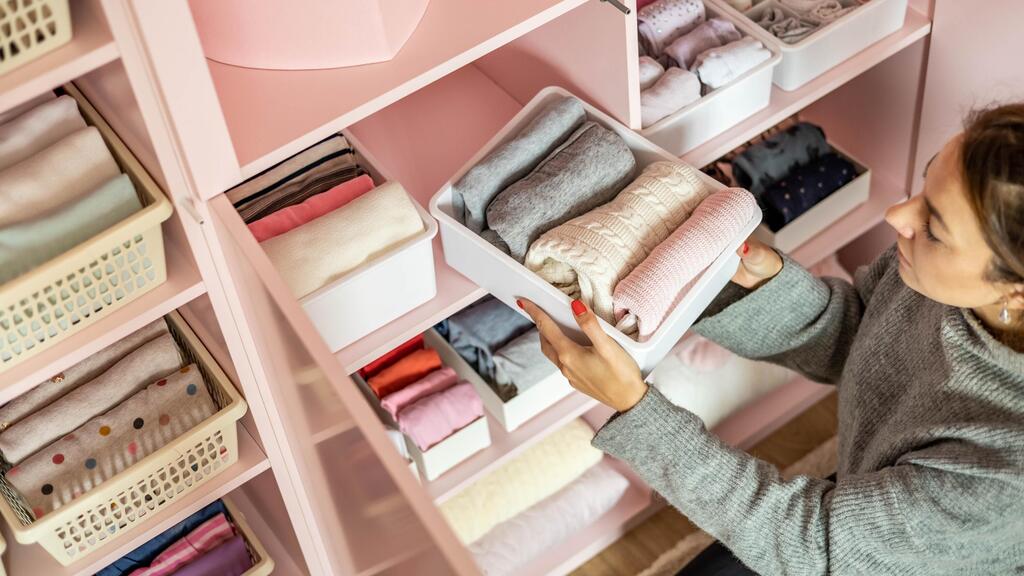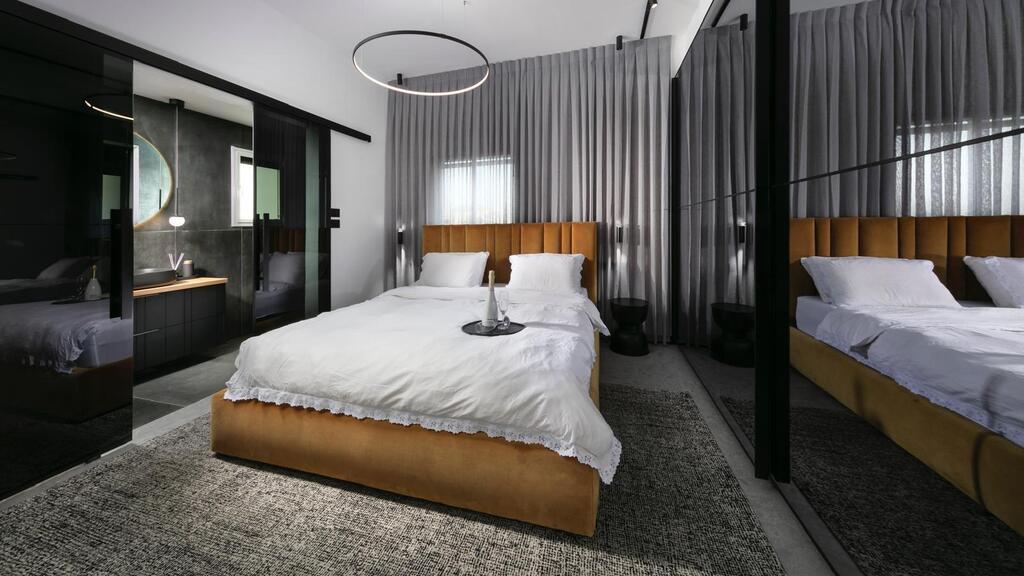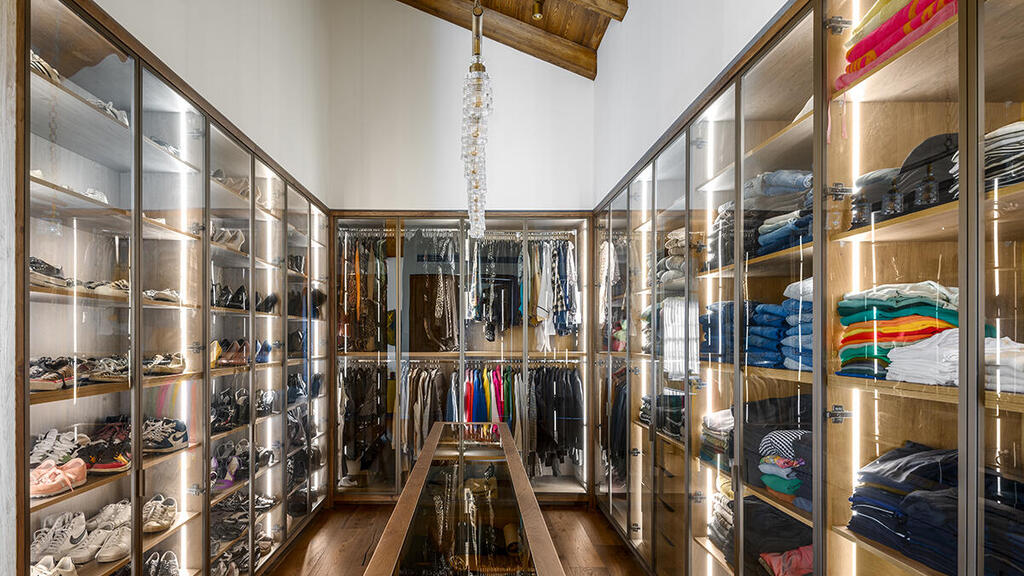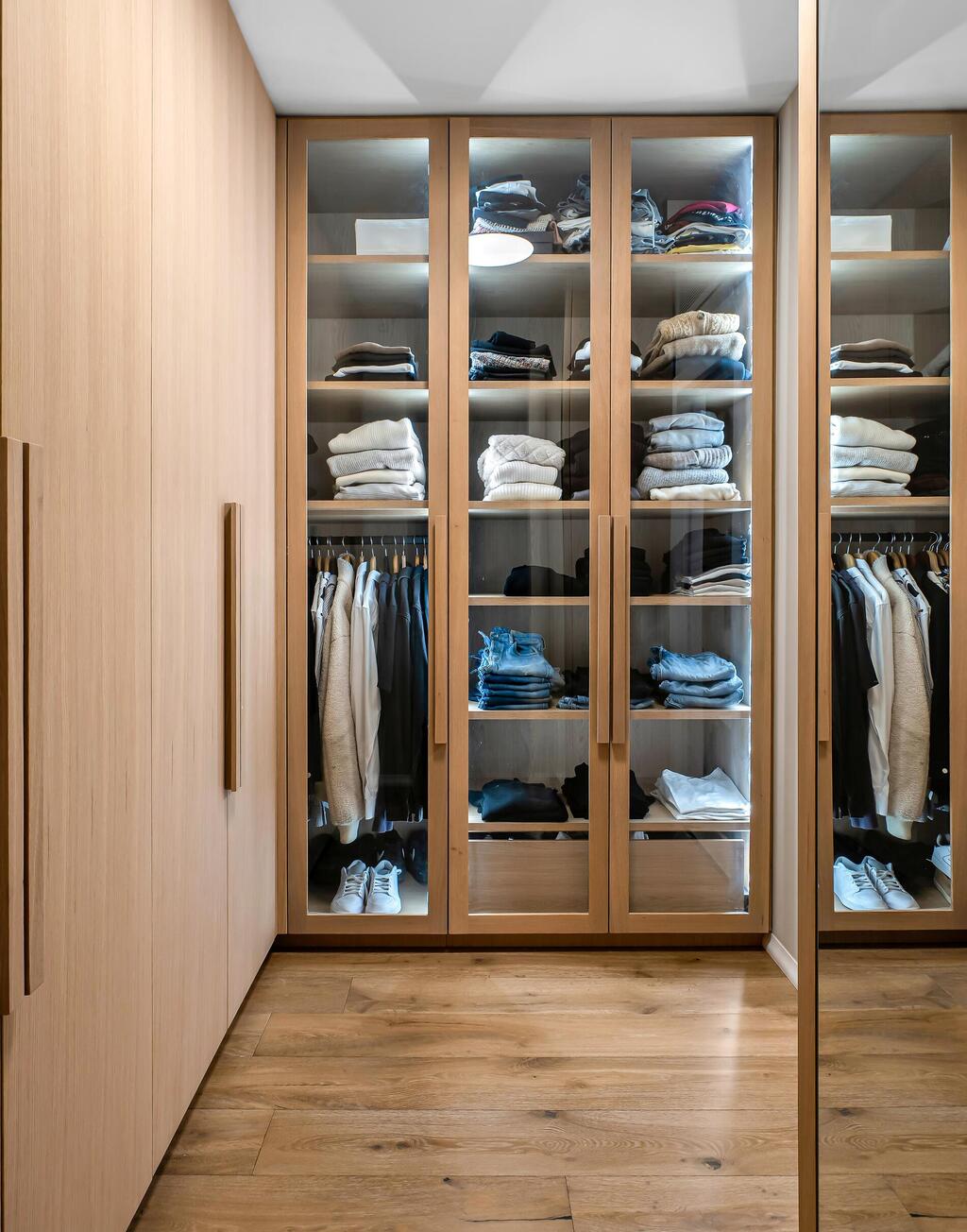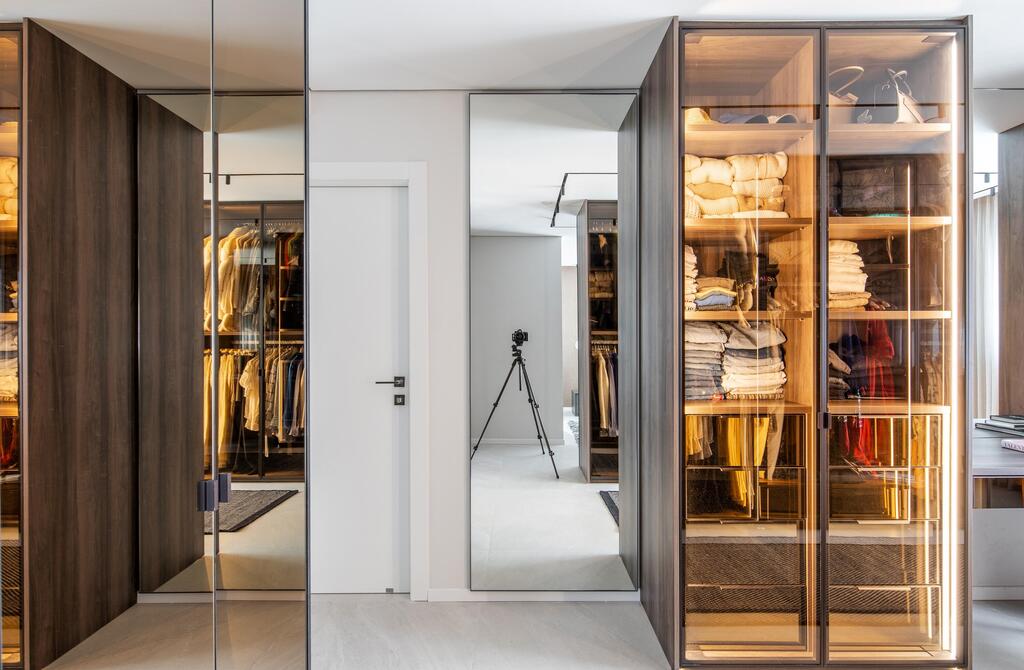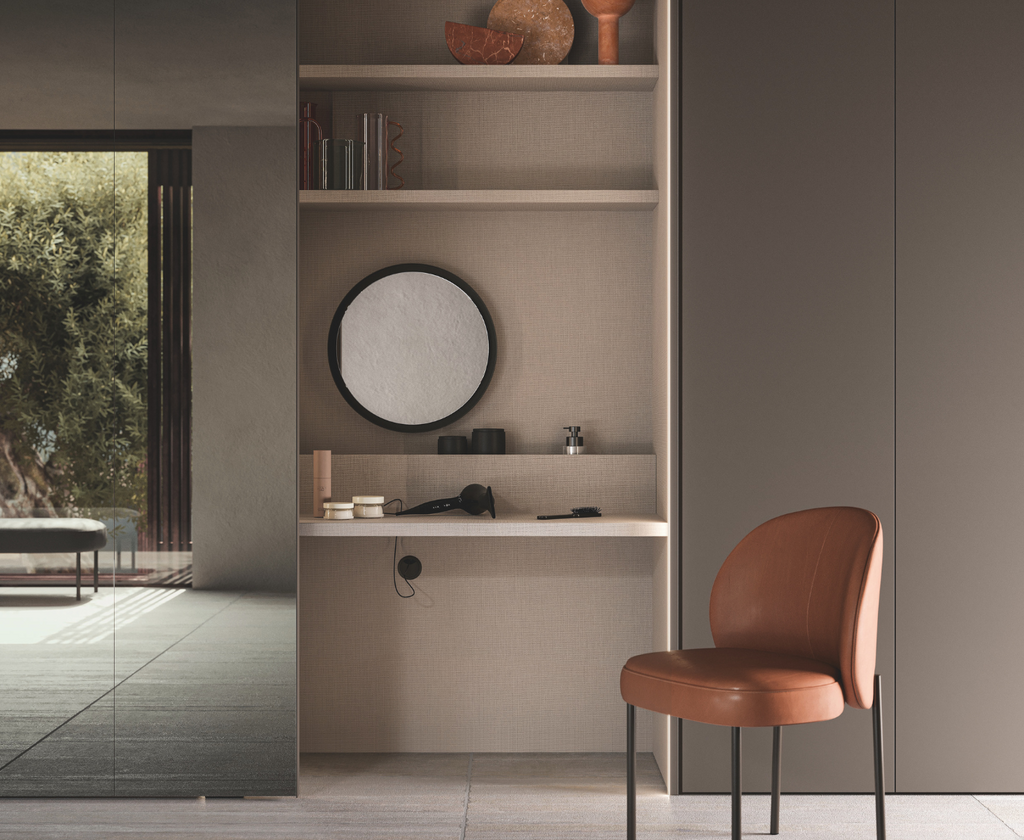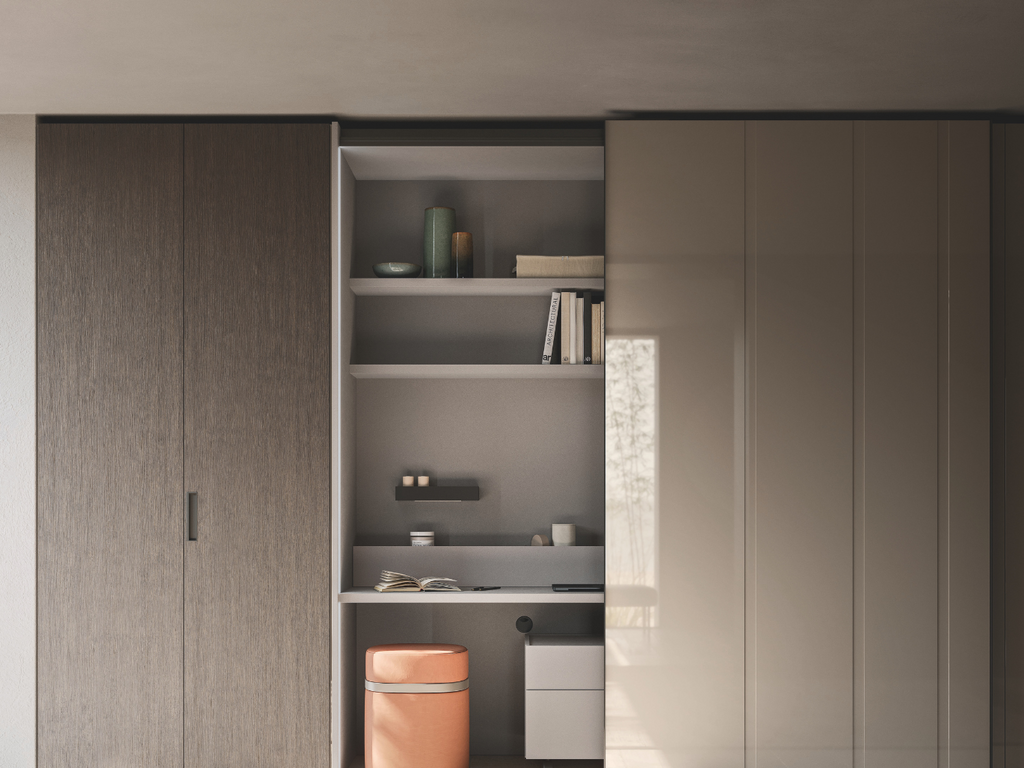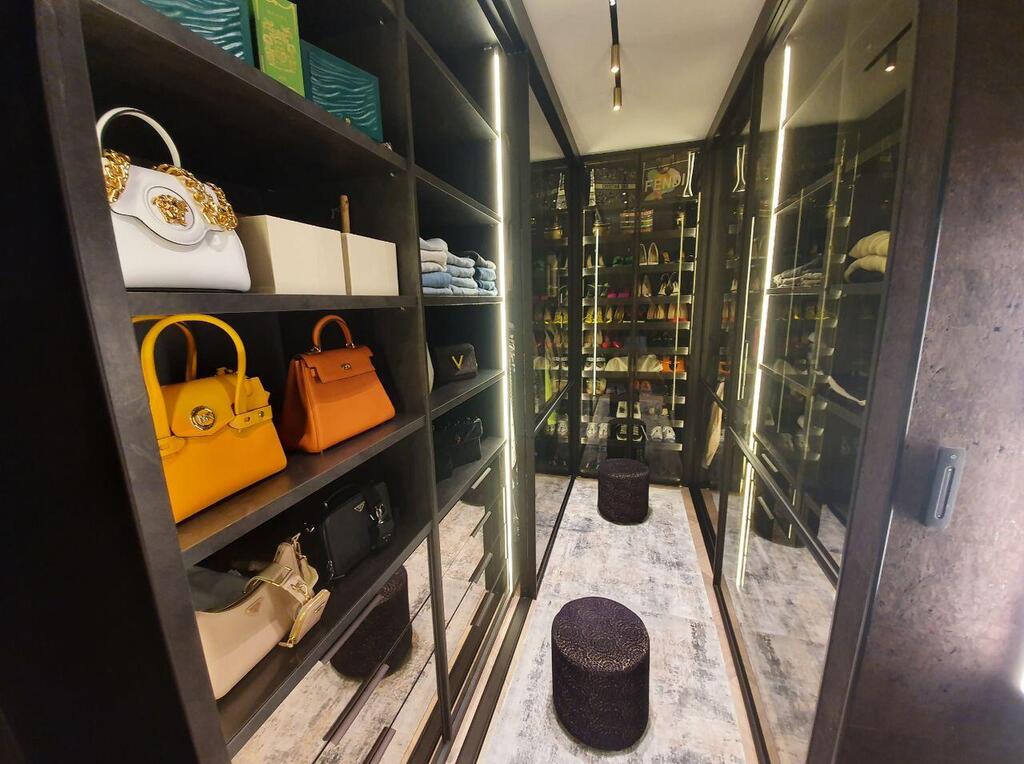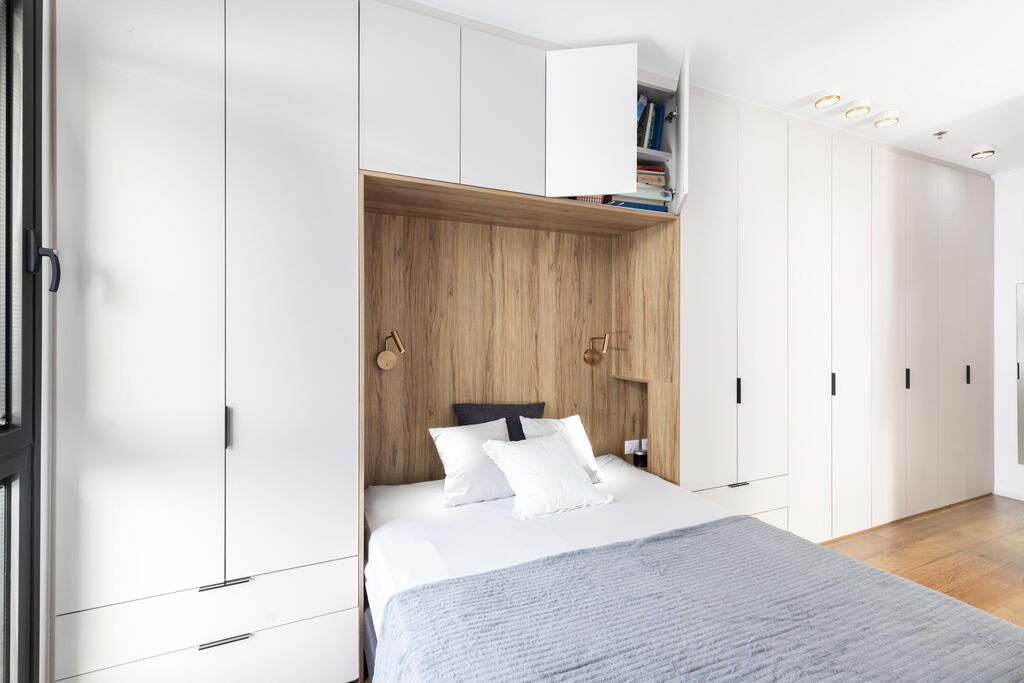There’s no arguing with the fact that Israelis are known for their great love of storage and also their love of shopping, which creates an endless cycle that sustains itself. In every conversation about moving house, renovating or building — whether a compact, rented apartment in a city center or a huge suburban estate — the important questions immediately come up: how much storage is there? Is it sufficient? And how much more storage should you add, just to be safe?
There are several clear reasons why storage matters so much for us in Israel: First, we are hoarders and therefore tend to keep endlessly useful items alongside objects with sentimental value that “you simply can’t throw away.” Second, the modern consumer culture and the ease with which we can buy everything at a click pushes us to purchase more and more items, and correspondingly to store ever more of them. Third, we are a people that travels a lot around the world and, accordingly, we buy and consume quite a few physical products alongside experiences and thrills.
Into this complex picture fit closets and cabinets of various kinds, whose role is to house everything in a way that looks tidy. The closets serve different functions: storage of dishes, clothing and toys, and up to designated cabinets such as one for collections, one for the washing machine and dryer, one for drinks, and even a cabinet dedicated for a robot vacuum‑mop.
Beyond all this, closets — as large furniture pieces and big design items in the home — influence the appearance and overall design of the space, and therefore many Israelis choose to invest in them and tailor them to their personal taste and needs. Often the budget for joinery and wardrobes will be the largest in the home, far more than for the kitchen, wall finishes or other furniture.
“The ongoing wars and the economic situation that changes frequently heavily affect the Israeli experience and the desire to live in abundance,” says Michael Ohayon, an interior planner and designer. “The fear that something might happen at any moment causes Israelis to buy far beyond the real need and accordingly to accumulate and fill storages and make sure nothing will be missing. In addition, the warm Israeli character likes to keep nostalgic items that pass from generation to generation, and also entertain in abundance family and friends — which requires more and more space for dishes, sheets, towels, tablecloths, and what not.”
Interior designer Hadas Rot of “Halel Architecture” agrees with Ohayon about the Israeli tendency to hoard, but attributes it more to the human tendency in modern culture.
“There is no doubt that the vast majority of my clients ask for a lot of storage, particularly at older ages and as children get older, the hoarding phenomenon becomes stronger. In many cases I exploit existing spaces, such as under stairs or under beds, to plan and add additional wardrobes,” says Rot.
As a professional who meets many architects, designers and private clients, Tamir Raz, CEO of Delkoub — a company that manufactures and imports closets — says closets are an integral part of the home’s “dress-up.”
“But beyond the design aspect — and given that the home is smaller — closets can house many items and visually create order, so it is clearly recommended to integrate a large wardrobe or large wardrobes in a small apartment,” he adds. For a sense of space, you might cover the doors in mirror on their outer side.
As planners and designers, both Ohayon and Rot testify that the reference to storage — amount, types of items and the storage solutions offered — arises very early in the renovation or planning process.
“It comes up already during the initial questioning, when I examine with clients what contents they bring with them, what they have and what the needs are. In my projects I always insist on wardrobe planning as part of the general joinery and there will always be extra storage beyond the stated need,” says Ohayon.
Rot adds that she is careful to talk about all the clients’ needs right at the beginning and especially about special storage needs like a closet with a large door, a significant bookcase or a walk‑in closet that is utilized up to the last centimeter. “You need to know from the outset which place will be dedicated to each object,” she offers as a tip.
To what extent do cabinets influence home design, and what characterizes Israelis in terms of cabinets in the various rooms of the house?
“There’s no general characteristic, except perhaps the fear of dust and the preference for closed wardrobes,” according to Rot. “Then, each to his own preferences. Internal division is very personal: some need more space for shoes, for button‑down shirts or underwear — there’s no uniform percentage breakdown between hanging, shelving and folding. Religious customers, for instance, need much more space whether due to number of persons in the house, hosting for weekends and holidays requiring more of everything, and also storage of many holy books, ritual objects and even unique items like skullcaps. In other homes, I might design a particularly large library, either because the clients are book people or because they like seeing books. In such libraries I prefer to create an interesting composition that is practical and aesthetic and combine closed storage and display shelves for decorative items. In bedroom closets I always think ahead and design wardrobes that will suit children of any age.”
Ohayon reports that many times his clients request closets with deep storage, enough space to put many things, whether in the kitchen or in the bedroom. “Israelis like to know they have enough room for winter and summer clothes alternately, and also albums, documents, blankets, towels, bedding, appliances like vacuum cleaners, hair dryer, ironing board, mixer and cleaning materials. Basically, everything that used to lie on the counter is now in storage,” says the designer.
Raz notes that, with time, customers arriving for closet planning have more and more specific demands. “People ask for storage for specific items. They want to know for example where their suitcase will be in the closet and exactly where the menorah will be displayed in the living room. Beyond that, I can say with certainty that there is today more demand for swing doors rather than sliding doors — especially as the home is smaller — so much that today 70% of the doors I produce are swing doors.”
“In a time when every corner in the home is important, and the need for smart storage solutions only grows, custom closets have become an essential piece in every home,” says Hadar Melamed-Rechter, the commercial designer of Kaufman Group, which is launching the closet collection of the veteran Italian brand Alf DaFrè at the Kaufman Home complex in Bnei Brak. “Beyond the basic function of storage, a well‑designed closet integrates into the space, complements the design line and even can become a visual focal point. The secret lies in the ability to create a closet that is perfect for you — for the space size, for your personal needs, lifestyle and personal taste.”
From her experience she recommends skipping the purchase of a “standard catalogue” closet, even though a custom‑plan closet is more expensive. “Forget catalogue standard closets! Building a custom closet opens up a world of possibilities. You decide the precise dimensions, and utilize every free centimeter — from entire walls to tricky niches. The internal division is the hallmark: drawers of different sizes, dedicated compartments for shoes or jewelry, pull‑out hanging rods, adjustable shelves — everything designed so that it fits exactly your kind of clothes, accessories and the quantity of items you own. In the long term — you win.
“Also on the visual side, the sky is the limit. Choose the exact colors and materials that match the existing design of the room, from solid wood in natural tones, through laminate panels in a variety of textures, to glass and metal. Incorporating mirrors on the front of the closet not only saves space but also creates a feeling of light and space in the room. This is furniture that literally facilitates daily life,” she says and mentions several innovations in the field: the addition of sliding doors and inside a fully‑fitted compartment that can be a vanity or work‑station, without taking extra space in the room; a transition door from the bedroom to another space like the bathroom in the continuity of a unified facade. All without compromising on design and functionality.
Surprisingly, even in the closet domain there are trends. “First, what stands out today are very tall doors — up to two and a half or three meters, depending on the home and room of course,” says Raz, noting that this is especially true in relatively small developer apartments, where there is no longer a built‑in closet as there used to be. “When you open such a door, you immediately see in a very orderly and clear manner a whole world comprised of bespoke joinery suited to the specific family. Another trend is the addition of lighting with several options — ambient lighting or functional lighting that illuminates exactly what you are looking for, even if it is deep inside.
“Transparent doors in various shades of transparency, or glass printed with a fine network and hidden hinges for a minimalist design — these too are trends today, especially among luxury fans who like to see before their eyes what they have — designer bags, valuable sneakers, hat collections and so on; Maybe under the influence of TikTok and the world of social‑media influencers. I must note in this context that, contrary to the widespread belief that the demands come from women, in recent years Israeli men also have quite a few demands and they also like dedicated drawers for glasses, watches, jewelry, aftershave, belts, shoes and bags.” If you are worried about completely transparent closets, you can choose a middle route and order doors with frosted glass, satin glass or fluted glass.
What about cabinets in the living room and kitchen?
“I can testify that most clients will opt for a living‑room wall with cabinets in light tones combined with wood and a glass‑front element — a display case for decorative items. The living‑room cabinet will also include the television and perhaps a fireplace intended mainly for beauty and a warm, good feeling. In kitchens, the current demand is predominantly for cabinets with a light wood finish with the big comeback of display cabinets for dishware or drinks, and in bathrooms there is currently demand mainly for painted grooved wood cabinets with a dirt-repellent finish and recessed handles.”
Ohayon and Rot provide a different angle regarding storage trends. They both agree that worldwide more products keep entering the market and there is always something newer and prettier, yet for a large fixed piece of furniture that appears in almost every room of the home, it is more correct to plan a closet that is strong, easy to maintain and durable for years. For example, they do not recommend adopting adopting trends that are common online, such as open cabinets for someone who struggles with minimalism and order (and frequent dust accumulation).
“There are trends that repeat such as bold colors, special materials or cut‑outs in patterns. In a case where I decide to use such a trend, I ensure that it appears only on the wardrobe fronts, which can be easily replaced with new fronts later. The most important thing is that there is a guiding line that will maintain a certain consistency across the different rooms of the house and will give good energy and a pleasant feeling,” Ohayon sums up.
Another important tip noted by the interviewees is leveraging the room’s full height, as far as possible. That way you secure additional storage up to the ceiling, and avoid dust collecting at the top. The three also suggest reviewing your personal wardrobe to determine the optimal internal division between shelves, drawers and hanging space. Remember, drawers are indeed more expensive, but much more comfortable to use because of the pull‑out operation.
18 View gallery


One large closet is better than several chests of drawers and bookcases, Riviera Cabinets, Design: Inbar Krepp
(Photo: Hila Zinn)
18 View gallery


Riviera Cabinet Shelving Unit – Interior Design by Roni Shani Feldstein for Racheli Krot’s Apartment
(Photo: Orit Arnon)
18 View gallery
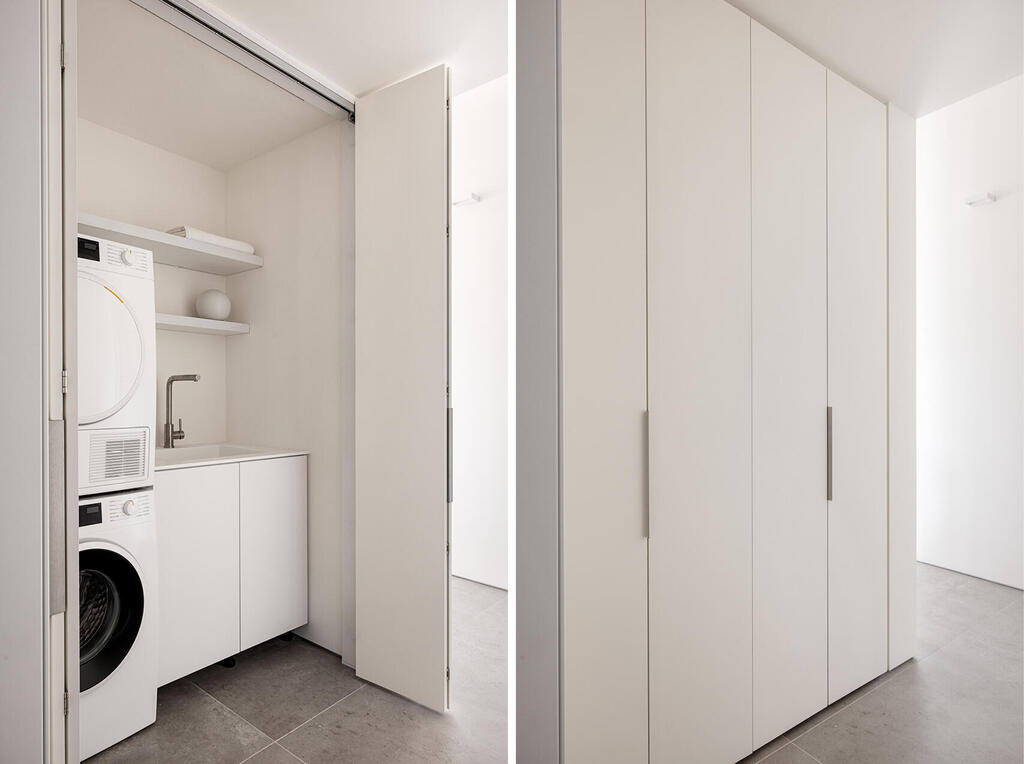

A storage closet that contains an entire laundry room, design: Sandbank Architects
(Photo: Itay Banit)
18 View gallery
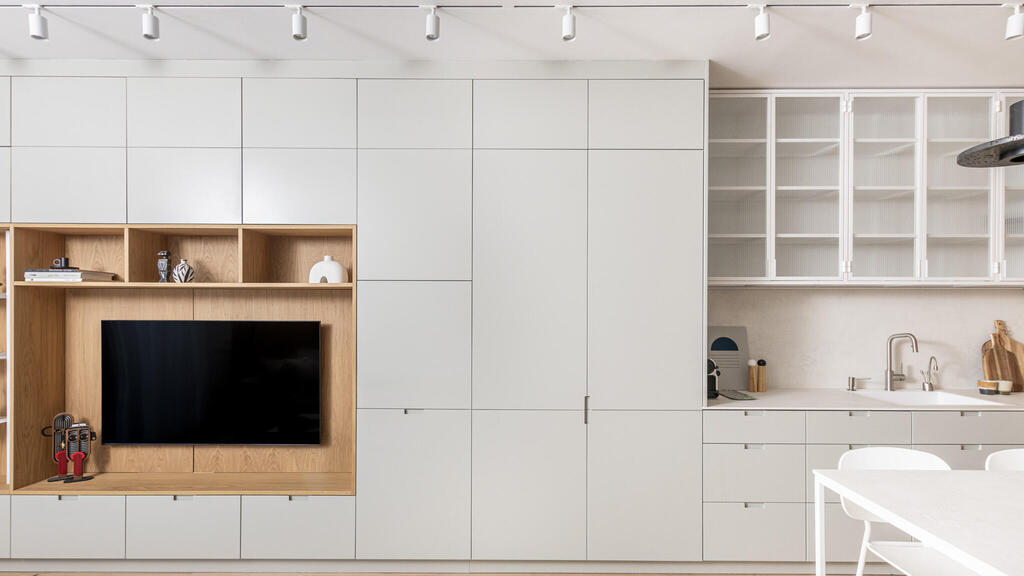

XSME – Storage. Continuous carpentry unit combining a TV unit and kitchen – a project in lieu of a hotel. Design: Sharon Cooper
(Photo: Ariel Medina)
Plan by season. It’s worthwhile to separate clothes and accessories into two active seasons: winter and summer, and swap them as needed. This also means you’ll use the closet’s height well. Off‑season clothes — fold and store in boxes or vacuum bags on the top shelf or under the bed. This way you only see the relevant clothes and avoid visual overload.
Choose a closet of appropriate depth. Many claim ideal depth is 60 cm, allowing hanging of coats and long clothing without wrinkling. But this assumption should be tested individually. If your room is especially narrow or you don’t need much hanging, you might opt for a shallower wardrobe that is more user‑friendly.
Don’t shy away from gadgets and innovations. From bargain baskets and boxes in discount stores to smart adjustable shelving systems that allow height change according to item type (for example: more space for sweaters in winter, less for short shirts in summer) and of course LED lighting with sensor, especially in deep closets. Consider a closet with double‑hanging rods: upper for long items (dress, coat), lower for shirts/pants.
Multi‑season shelf. Keep one mixed shelf for transitional items, so you can easily grab an outer layer on a cool evening.
Small solutions with big effect. Add internal hooks to doors for bags, scarves or jewelry. Use a pull‑out shoe rack to save space at the base of the wardrobe. Include a drawer for accessories/jewelry with velvet lining.
Labels. For a few dozen shekels you can buy a label‑printer and you’ll be able to add to each basket, drawer or box what is inside. This is especially helpful with younger children who will love knowing where their school shirts, short trousers and socks are.
Ensure the “direct‑view” principle. If you cannot see an item, you’re likely not going to wear it. So arrange most of your seasonal clothes at eye level by usage: everyday shirts, sweaters, jeans, sportswear. Less‑used items (evening wear or heavy coats) position at the edges.
Apply the “80/20” rule. Most people use about 20 % of their clothes 80 % of the time. Therefore, once a season, do a quick sort and anything you haven’t worn in the past year donate, discard or store outside the closet. It’s important to keep the closet an active space, not a storage vault.
Have a shelf, basket or rack for “in‑between” clothes. For garments that aren’t completely clean yet but don’t need laundering immediately.




